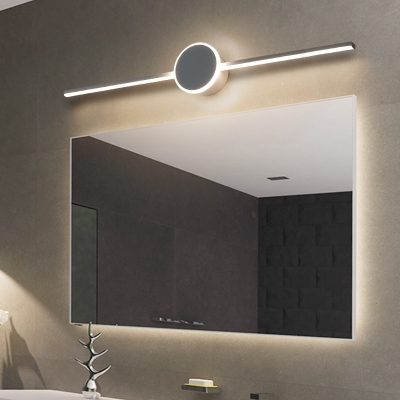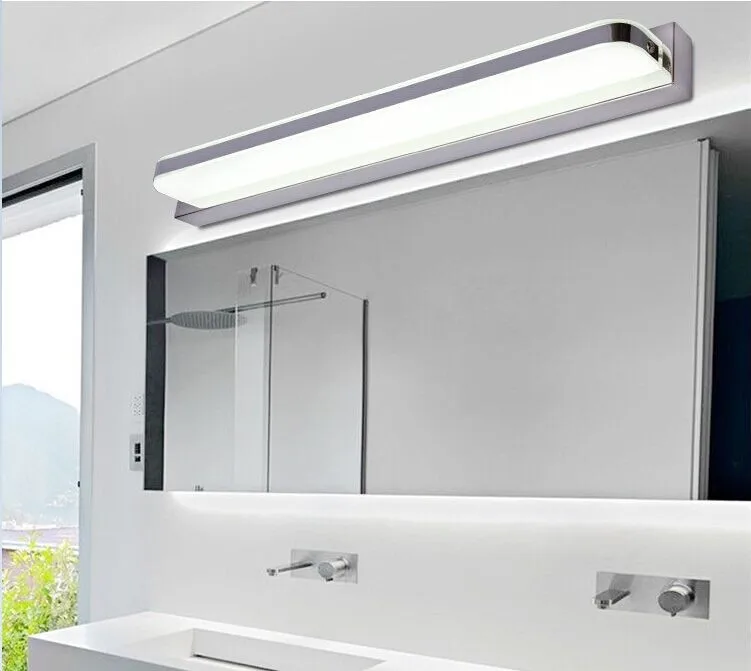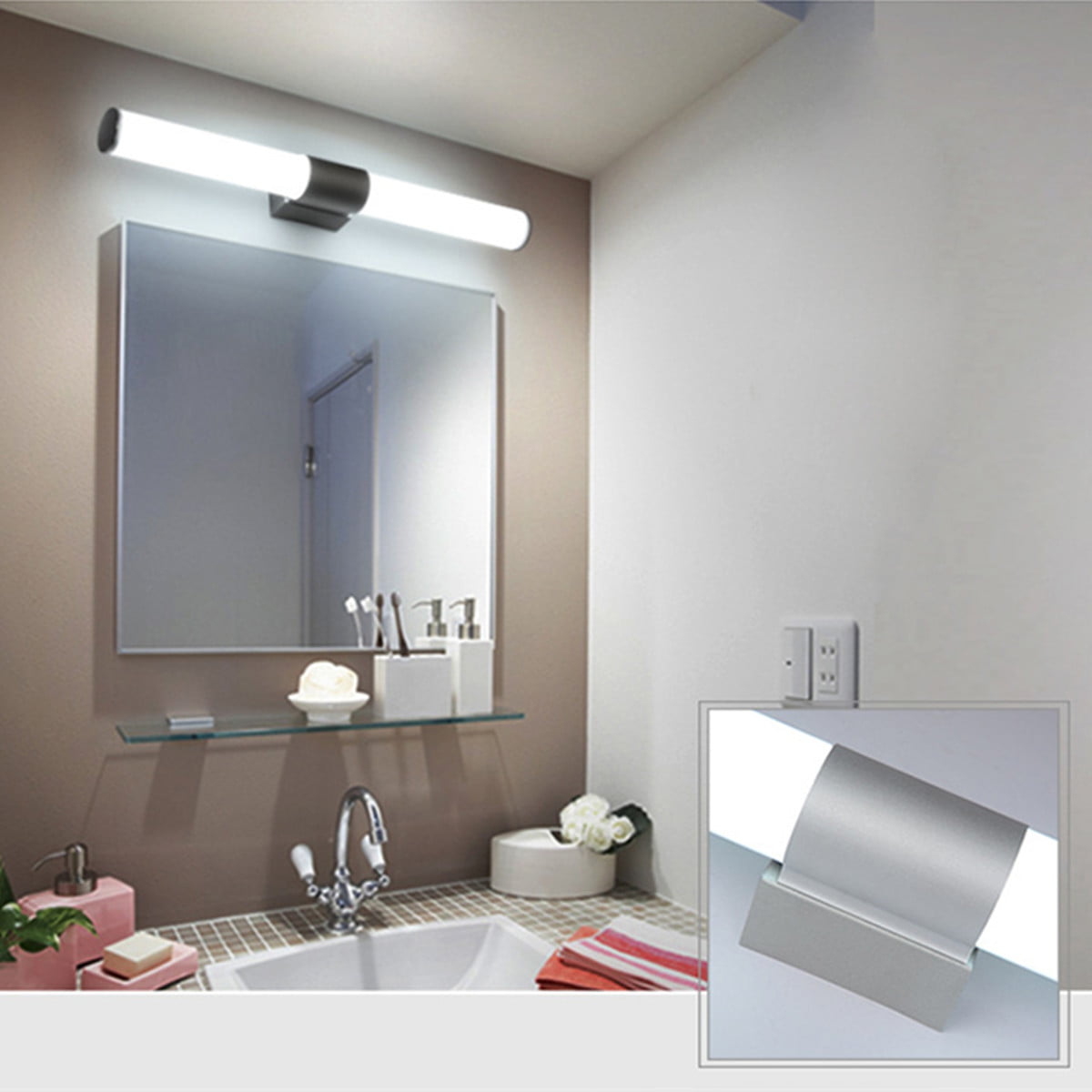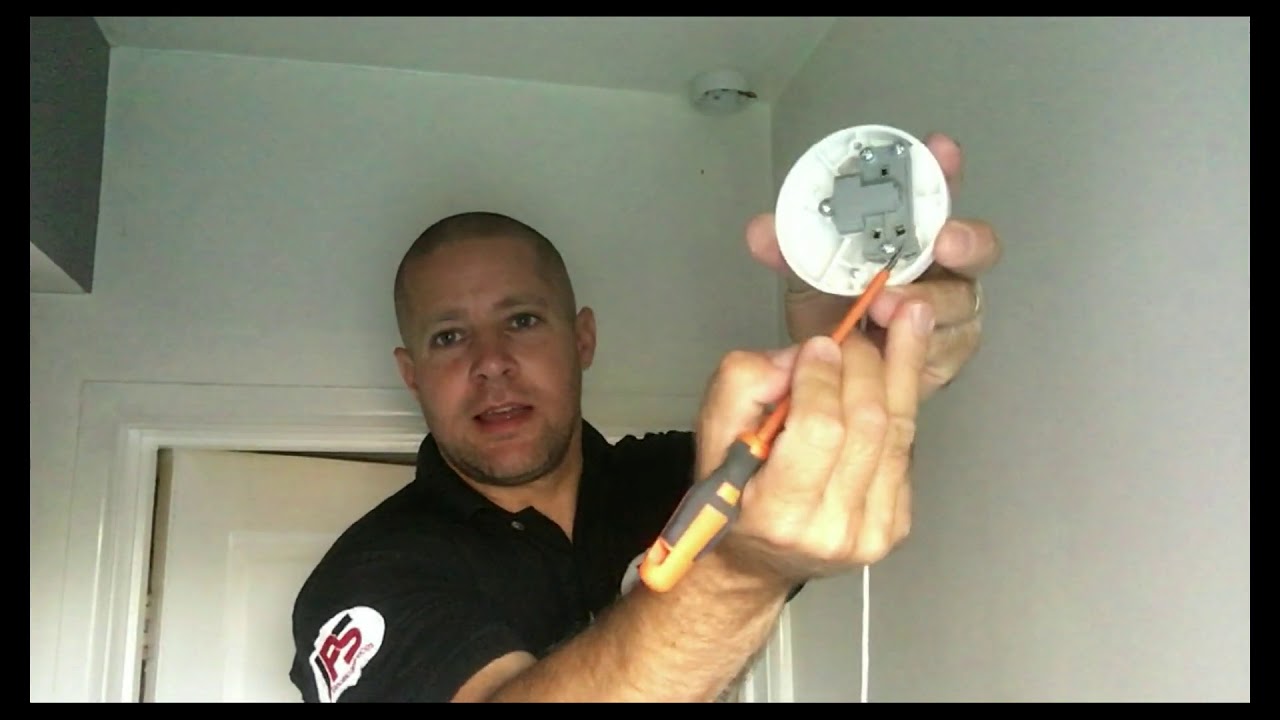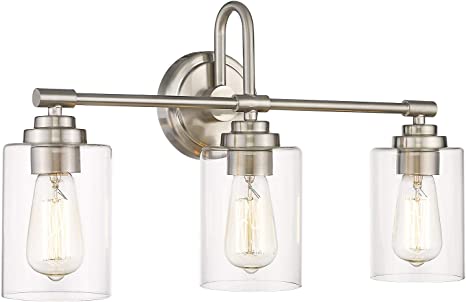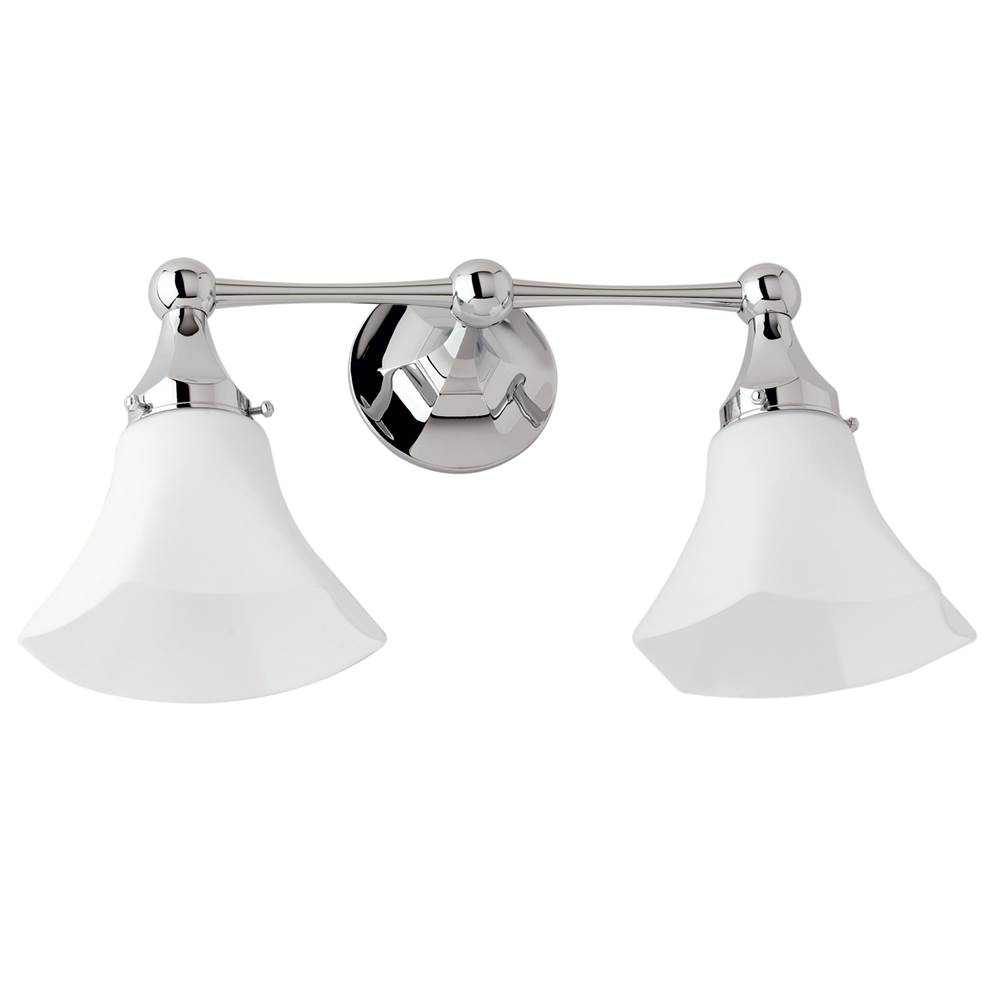Benefits of LED Lighting for Your Bathroom
LED lighting has revolutionized modern interior design, offering a myriad of advantages that make it an excellent choice for bathroom lighting. Here are the main benefits of integrating LED lights into your bathroom:
- Energy Efficiency
One of the most significant advantages of LED lighting is its energy efficiency. LEDs use significantly less electricity compared to traditional incandescent or even CFL bulbs. This reduction in energy consumption not only helps the environment by reducing your carbon footprint but also lowers your electricity bills. - Longevity
LEDs have an impressive lifespan, often lasting up to 25,000 to 50,000 hours. This longevity means that you will spend less time and money replacing bulbs, making LEDs a cost-effective lighting solution for the long term. In a bathroom setting, where changing light bulbs can be cumbersome, this extended lifespan is particularly beneficial. - Improved Light Quality
LED lights provide a high-quality, bright, and uniform light, which is essential in a bathroom where tasks like shaving, makeup application, and grooming require clear visibility. The superior color rendering index (CRI) of LEDs ensures that colors appear more accurately under their light, enhancing the overall functionality and aesthetics of the bathroom. - Versatility
LED lighting comes in various shapes, sizes, and color temperatures, allowing for extensive customization to match any bathroom design. Whether you need soft, warm lighting for a relaxing bath or bright, cool lighting for morning routines, LEDs can be tailored to suit different needs and preferences. - Safety
LEDs generate very little heat compared to traditional lighting options. This characteristic reduces the risk of burns and overheating, making LED lights a safer choice for bathroom environments. Additionally, many LED fixtures are designed to be moisture-resistant, further enhancing their suitability for use in bathrooms. - Eco-Friendly
Unlike traditional incandescent bulbs, LEDs do not contain harmful substances like mercury, making them more environmentally friendly. Their long lifespan also means fewer bulbs end up in landfills. Choosing LED lighting is a step toward a more sustainable and eco-conscious lifestyle.

Choosing the Right Style and Design for Your Bathroom LED Lights
Selecting the appropriate style and design for your bathroom LED lights involves balancing functionality with aesthetics. Here are some considerations to guide your choice:
Assessing Bathroom Size and Layout
The size and layout of your bathroom will influence the type and number of LED lights you need. In smaller bathrooms, a single, well-placed fixture may suffice, whereas larger bathrooms might require a combination of overhead, vanity, and accent lighting to ensure even illumination.
Determining Light Temperature and Brightness
LED lights come in various color temperatures, typically measured in Kelvin (K). For bathrooms, a color temperature between 3000K (soft white) and 5000K (daylight) is ideal. This range provides sufficient brightness for tasks without being too harsh. Additionally, consider the lumen output to ensure your space is adequately lit.
Choosing Fixture Styles
The style of the light fixture can significantly impact the overall look of your bathroom. Modern fixtures with sleek lines and minimalist designs complement contemporary bathrooms, while vintage or ornate fixtures can enhance traditional or eclectic spaces. Wall-mounted fixtures, such as sconces, are popular for their versatility and can add a decorative touch.
Considering Placement and Functionality
Thoughtful placement of LED lights can enhance both the functionality and ambiance of your bathroom. Vanity lights should be positioned at eye level to reduce shadows on the face. For ambient lighting, consider overhead fixtures or recessed lights. Accent lighting, such as LED strips under cabinets, can add a layer of interest and depth.
Integrating Smart Features
Modern LED lighting often comes with smart features, such as dimmability and color-changing capabilities. These features allow you to adjust the lighting to suit different moods and times of day. Smart LED lights can also be controlled via apps or voice commands, adding convenience and customization.
Ensuring Compatibility and Quality
Ensure that the LED lights you choose are compatible with existing electrical systems and any dimmer switches you plan to use. Opt for high-quality fixtures and bulbs from reputable manufacturers to guarantee durability, safety, and consistent performance.
How to Install Wall-Mounted LED Bathroom Lights
Proper installation of wall-mounted LED bathroom lights is crucial for both functionality and safety. Follow this detailed guide to ensure a successful installation:
Gather the Necessary Tools and Materials
Before starting the installation, gather all required tools and materials: a drill, screwdriver, wire strippers, voltage tester, electrical tape, mounting hardware, and the LED light fixture. Ensure you have the appropriate light bulbs if they are not included in the fixture.
Turn Off Power
Safety is paramount when working with electricity. Turn off the power to the bathroom at the circuit breaker. Use a voltage tester to confirm that the power is off before proceeding with the installation.
Prepare the Mounting Area
Determine the ideal height and location for the wall-mounted LED light. Mark the mounting points on the wall, ensuring they are level. If you are replacing an existing fixture, remove it carefully and check the electrical box for compatibility with the new fixture.
Install the Mounting Bracket
Attach the mounting bracket provided with your LED fixture to the wall. Use the appropriate screws and anchors to ensure it is securely fastened. The bracket should be level and firmly attached to support the weight of the fixture.
Connect the Wires
Carefully connect the wires from the fixture to the wires in the electrical box. Typically, this involves connecting black (hot) to black, white (neutral) to white, and green or bare copper (ground) to the ground wire or grounding screw. Use wire nuts to secure the connections and wrap them with electrical tape for added safety.
Attach the Fixture and Test
Once the wiring is complete, attach the LED fixture to the mounting bracket according to the manufacturer’s instructions. Secure it with screws or other provided fasteners. Restore power at the circuit breaker and test the light to ensure it operates correctly. Make any necessary adjustments to ensure the fixture is level and securely mounted.
Energy Efficiency and Cost Savings with LED Bathroom Lights
LED lighting is celebrated for its energy efficiency and cost-saving potential. Here’s a detailed look at how LED lights can contribute to both:
Lower Energy Consumption
LED lights use significantly less energy than traditional incandescent bulbs, often consuming up to 80% less electricity. This reduction in energy usage directly translates to lower utility bills, making LEDs a cost-effective lighting solution for any household.
Reduced Heat Output
LEDs generate very little heat compared to incandescent and halogen bulbs, which release 90% of their energy as heat. This reduced heat output means that less energy is wasted, further enhancing the efficiency of LED lights. Additionally, it helps maintain a cooler bathroom environment, reducing the load on air conditioning systems.
Longer Lifespan
The extended lifespan of LED lights—often 25,000 to 50,000 hours—means fewer replacements and less frequent purchasing of new bulbs. This longevity reduces maintenance costs and the hassle of constantly replacing burned-out bulbs, adding to the overall cost savings.
Lower Replacement Costs
While the initial cost of LED bulbs can be higher than traditional bulbs, their longer lifespan and lower energy consumption lead to significant savings over time. The reduced frequency of replacements lowers the total cost of ownership, making LEDs a smart investment.
Environmental Benefits
The energy efficiency of LEDs contributes to a reduction in greenhouse gas emissions, as less electricity demand translates to lower fossil fuel consumption by power plants. Moreover, LEDs do not contain harmful substances like mercury, which is found in CFLs, making them more environmentally friendly and safer to dispose of.
Rebates and Incentives
Many utility companies and government programs offer rebates and incentives for switching to energy-efficient lighting, including LEDs. These financial incentives can further offset the initial cost of purchasing LED fixtures and bulbs, making the transition to LED lighting even more economical.
Maintenance and Care Tips for LED Bathroom Lights
Proper maintenance and care of your LED bathroom lights ensure they remain efficient and prolong their lifespan. Here are some essential tips:
Regular Cleaning
Dust and dirt can accumulate on light fixtures, reducing their brightness and efficiency. Regularly clean the fixtures with a soft cloth and mild detergent. Avoid harsh chemicals that could damage the finish or the LED components. For fixtures in damp environments, ensure they are thoroughly dried after cleaning.
Check for Loose Connections
Periodically inspect the fixtures and electrical connections for signs of wear or loosening. Loose connections can cause flickering and reduce the lifespan of the LEDs. Tighten any loose screws or connections to maintain optimal performance and safety.
Avoid Overloading Circuits
Ensure that the electrical circuit supplying power to your LED bathroom lights is not overloaded. Overloaded circuits can cause overheating and potential damage to the lights. Distribute the electrical load evenly across multiple circuits if necessary.
Replace Damaged Components Promptly
If any part of the LED fixture, such as the driver or housing, shows signs of damage, replace it promptly. Using damaged components can lead to inefficient operation and potential safety hazards. Always use the parts recommended by the manufacturer for replacements.
Use Appropriate Bulbs and Drivers
Ensure that any replacement bulbs or drivers are compatible with your fixtures. Using the wrong components can reduce efficiency and lifespan. Refer to the manufacturer’s specifications when selecting replacement parts to ensure compatibility and optimal performance.
Monitor Environmental Conditions
LEDs are sensitive to extreme temperatures and humidity levels. Ensure that your bathroom is well-ventilated to prevent excessive moisture buildup. In areas with high humidity, consider using moisture-resistant LED fixtures designed specifically for such environments to ensure longevity and reliability.
Modern Led Bathroom Lighting with Linear Shade Metallic Wall Mount Light with White Lighting
Aipsun 43.3in/40W LED Matte Black Modern Vanity Light Up and Down Wall Mount Light Indoor Wall Light for Bathroom Lighting Fixtures (Warm Light 3000K)
Indoor LED Bathroom mirror lights, Wall Mounted Modern LED Wall Lamps for Home ,gold black picture lighting lampara makeup luz
Mirror light led bathroom wall lamp mirror glass waterproof anti-fog brief modern stainless steel mirror cabinet mirror light
Acrylic Modern Bathroom Vanity LED Light Front Mirror LED Light
Modern led mirror lighting 6W 8W 12W AC90-260V wall mounted wall sconce industrial bathroom lighting stainless steel
Neewall LED Wall Light Neon [BUY NOW!!!] The Fancy Place
Combuh LED Bathroom Vanity Light 16 Inch 9w IP44 Wall Light Mirror Lighting Fixture Indoor Wall Lamp Chrome Modern Neutral White 4000K
Joossnwell LED Bathroom Vanity Lighting Mirror Front Makeup Lights Fixtures Indoor Wall Mount Sconces Lamps Brushed Nickel 23.62″ Inch 14W 4000K
Related Posts:
- Stainless Steel Bathroom Light Fixtures
- Buy Bathroom Lights Online
- Bathroom Light Tube
- Black Bathroom Light Pull
- Bathroom Lighting Fixtures Modern
- Update Bathroom Light Bar
- Screwfix Bathroom Light Fittings
- Bathroom Light Fixture Globes
- Bathroom Light Bulbs Replacement
- Bathroom Lighting For Makeup Application




